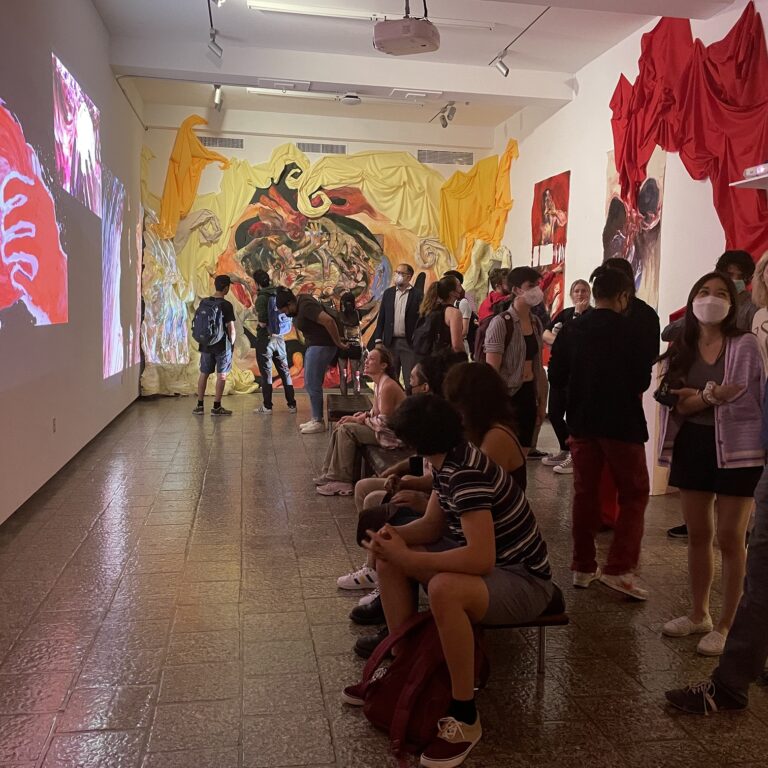Undergraduate Admission
Important Dates & Deadlines
Open House and Portfolio Forum
The Discover USC Open House is your opportunity to tour the USC campus and attend a Roski Portfolio Forum (for high school seniors only).
Roski School Portfolio Forum RSVP
First-Year Application and Portfolio
Submit your USC application, Roski portfolio and other required materials. USC merit or departmental scholarship consideration is included in the overall application review process.
December 1
Transfer Application and Portfolio
Applying for transfer from another college or university? Submit your USC application, Roski portfolio, transcripts and other required materials. USC merit or departmental scholarship consideration is included in the overall application review process.
February 15
Internal Transfer Application
If you are currently a USC student and are interested in applying to an art or design major, please, click here. Choose “Roski Major Application – for current USC students only” option.
Fall deadline – October 1
Spring deadline – March 1
The Basics
Applying to be an art or design student is exciting, but it can also get confusing. On this page, we’ll walk you through it—and we’re always here to answer your questions.
Applying through USC
In order to be accepted as a Roski School of Art and Design student, you’ll have to apply to USC. Many elements of your application are general to USC. Your portfolio and some other materials will be reviewed by the Roski admissions team.
USC admission is through the Common Application. The Common App usually opens around August 1.
Application Steps
-
1
You can find application guides for first-year and transfer students on the Common App website, or go ahead and apply here.
-
2
Upload a portfolio of 10 to 15 images of artwork you’ve made within the last two years at roski.slideroom.com. Your portfolio should not only represent your best skills in art—in a variety of media or a single area—but also demonstrate the development of personally unique ideas or concepts that have inspired the work as a whole. You can include work in your portfolio that you’ve created for class assignments, done on your own, or both. We do not accept images in PDF format.
For insight on organizing your work for portfolio submission, see Your Portfolio on this page.
Upload Your Portfolio
-
3
Upload your artist essay following the prompt in Slideroom. Your artist essay should not be longer than 500 words.
-
4
Your list of creative accomplishments should include, in chronological order, your practical experience in visual art or design, including high-school courses, summer art programs, internships, private lessons, collaborative or interdisciplinary projects, and other achievements.
-
5
USC requires you to submit transcripts, test scores (SAT/ACT scores may be optional) and letters of recommendation. You’ll find details in the Application Checklist on the USC Undergraduate Admissions site.
Most international students must meet language requirements, which are also detailed on the USC Undergraduate Admissions site.
Submit scores, transcripts and recommendations to:
USC Office of Admission
700 Childs WayUniversity Park Campus
Los Angeles, California 90089-0911First-Year USC Admission Details
Your Portfolio
Roski’s faculty admissions committee collaborated on a Q&A to help you organize your portfolio for admission to the school. Here’s what they said.
What sets one portfolio above the other?
- Work that moves beyond a recording of the world.
- Having bodies of work—different ideas and thoughts about what you’re producing.
- Evidence of creative thinking—unusual use of materials, a strong conceptual approach, an awareness of art history or contemporary art history.
What makes a successful portfolio?
- Work that stands out and grabs the viewer.
- Bodies of work with ideas that inform the work.
- Work that is outside of class assignments.
- Evidence that you’ve looked at contemporary art, art magazines, catalogs and websites. Think about contemporary culture and influences, and give your work a context beyond nice pictures.
What impresses you?
- An ability to articulate interesting things about the work: your thoughts, influences and ideas.
- Strong concepts, excellent execution, a unique point of view.
How could the concentration section of AP Art become a winning portfolio?
- Don’t make it random; think about a concept as opposed to content.
- Many students choose vague concepts, like world peace or relationships. Make it personal and specific, yet relatable.
Look at good contemporary artists for hints on selecting a concentration.
Financial Aid
Undergraduate financial aid is handled by USC central. In addition to federal aid, for which you may be eligible, the University offers Merit Scholarships and other awards. The Roski School also provides scholarships.
